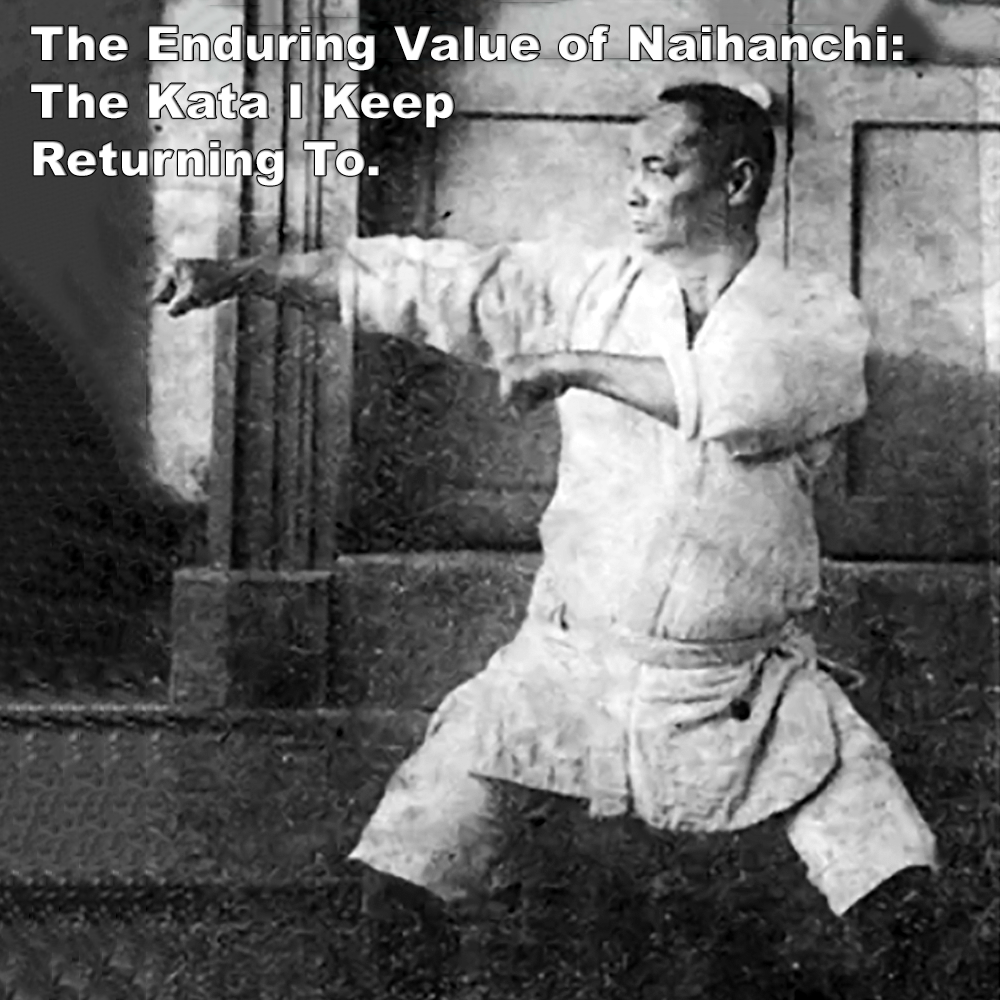
(Approx 1 minute 45 second read)
I’m sure many of you have a favorite kata. I have a few that just seem to sit well with me. One of those kata is Naihanchi. Simple in appearance but deep in application. It has a distinctive embusen compared to most other kata.
.
Gichin Funakoshi called the kata ‘Tekki’ (Iron Horse), I believe honoring his teacher, Anko Itosu, and emphasizing its strength and stability. While its precise origins are unknown, some sources suggest that Sokon Matsumura (1809-1899) may have played a role in bringing it from China.
.
Matsumura made several trips to China as an envoy, where he studied martial arts from both military and civilian sources. It’s possible he encountered the kata during these journeys, or learned it from Chinese martial artists who visited Okinawa.
.
At one time, Naihanchi was the first kata taught to students, not because it was simplistic, but because it embodied core principles considered essential for combat.
.
Hironori Otsuka (1892-1982), the founder of Wado-Ryu, remarked, “I personally favor Naihanchi. It is not interesting to the eye, but it is extremely difficult to use. Naihanchi increases in difficulty with more time spent practicing it. However, there is something ‘deep’ about it.”
.
Some believe the Nidan and Sandan versions were created by Anko Itosu, and some suggest they were all once just one kata. The fact that only the Shodan version has a formal opening suggests the kata may have been split. Either way, I believe they were the creation of Itosu.
.
Kentsu Yabu (1866-1937), a student of Itosu, said, “Karate begins and ends with Naihanchi”, emphasizing the kata’s importance.
.
Despite its understated appearance, it’s rich with highly effective techniques and concepts. You will rarely see it in competition, and many students of modern day karate may overlook it due to its perceived simplicity. But it remains a vital study for those with an interest in all things pragmatic.
.
Choki Motobu, one of Okinawa’s most formidable fighters, heavily emphasized the kata in his teachings, and believed its study was crucial to learning effective combat.
.
The techniques are designed for close-range fighting, integrating strikes and grappling in a way that makes them practical and direct.
.
It’s this close-quarter combat focus that makes it a cornerstone of classical karate’s combative repertoire.
.
For me, it offers a wealth of knowledge. It’s certainly one of my favorites, and one I often championed when teaching seminars and courses. Its methods and techniques, though simple to look at, really deserve deep and consistent practice.
.
Some kata we practice. Some kata stay with us. Naihanchi has stayed with me, and I suspect it always will.
.
.
Written by Adam Carter – Shuri Dojo
